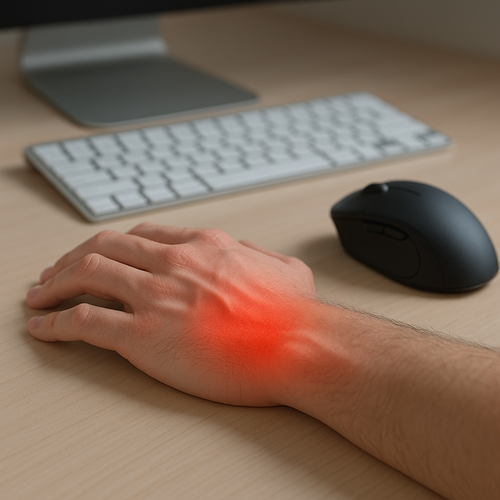Have you ever wondered what the difference is between an Ergonomic Mouse and a Normal Computer Mouse? In our business, we get asked this question every day. In fact we get asked it so much we decided we'd take the time to put into a blog post for you.
A bit of History
It might come as a shock that the computer mouse was first invented back in 1964. Douglas Engelbart created the very first computer mouse which featured a very simple design made from wood. However some 8 years later the mouse was re-designed by Xerox into a ball mouse to provide a more functional device. Most people would remember the ball mouse design. It worked by detecting movement of the ball on the surface of the desk and translating that into movement of the cursor on the computer screen. These were the first mass produced computer mice in the world.
In 1980, the optical mouse was invented as a replacement to the ball mouse, eliminating the ball which would become dirty from rolling round the desk surface, negatively affecting its function. Today the optical mouse has completely replaced the ball mouse, being supplied as the standard computer mouse with all new computers.
The very first computer mouse, invented by Douglas Engelbart in 1964.
So what's the difference?
Despite the innovative history of the computer mouse, what has not changed significantly is its exterior design. The design of the traditional computer mouse of 1980, is still largely the same as the computer mouse we see today. This flat design promotes the user to grip the mouse using a horizontal (palm down) anatomical position of the hand and forearm. When holding a standard computer mouse the ulna and radius bones in the forearm are crossed (see image). This crossing of the bones causes the activation of more muscles in the forearm, which in turn increases fatigue and strain on the muscles with repetitive and prolonged use of a computer mouse.
Ergonomic Mice
Ergonomic mice on the other hand are designed to place the users arm in a vertical position thereby providing optimum comfort and reducing the risk of injuries such as carpal tunnel syndrome, arthritis and other repetitive strain injuries.
There are many benefits for switching from a traditional computer mouse to a vertical ergonomic mouse including:
- Improved comfort
- Ability to operate a computer mouse for longer
- Reduce pins and needles
- Reduce aches or pains in your hand, wrist or forearm
- Reduce risk of developing a Repetitive Strain Injury
















← Older Post Newer Post →
0 comments
Get in Touch
Still have a question or simply want to discuss what ergonomic products are best suited? Get in touch, our expert team is available to provide free advice and support.